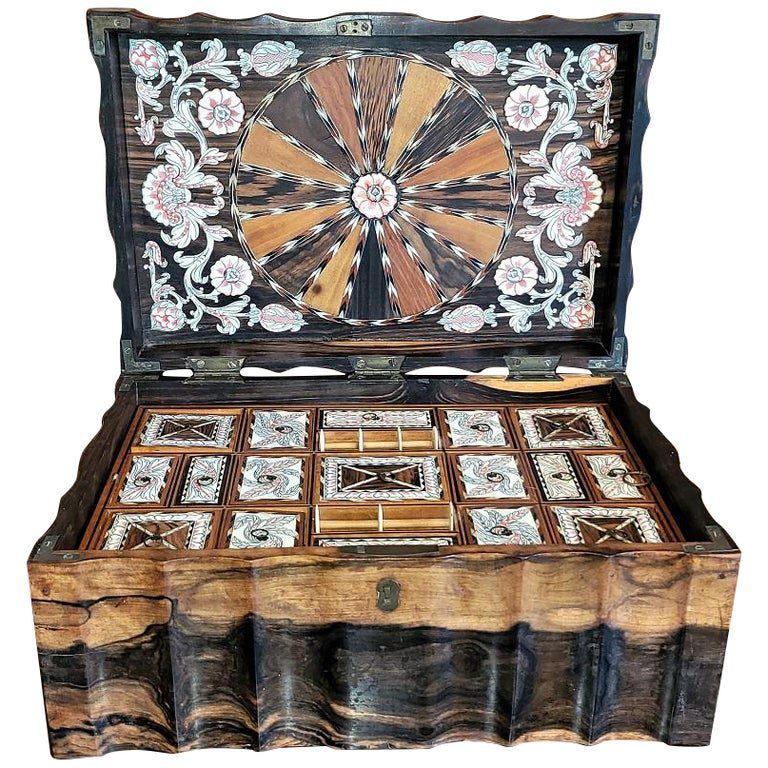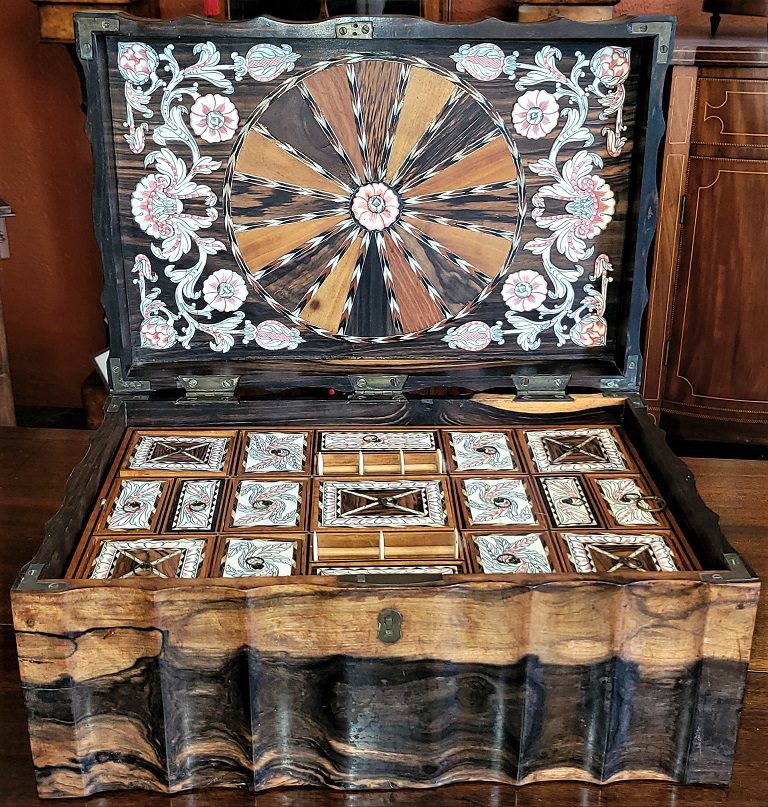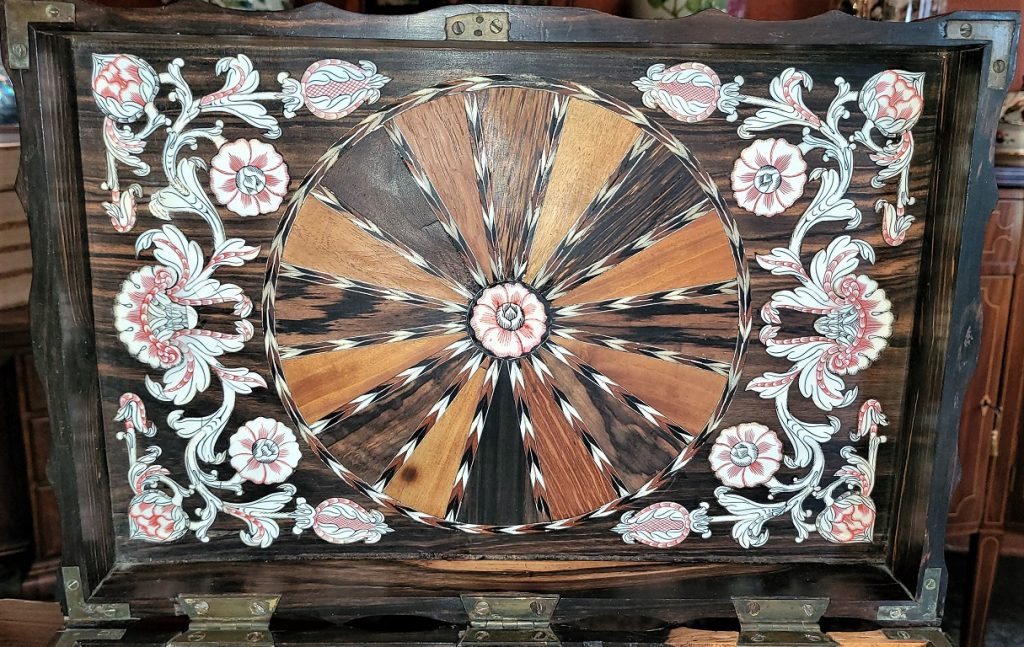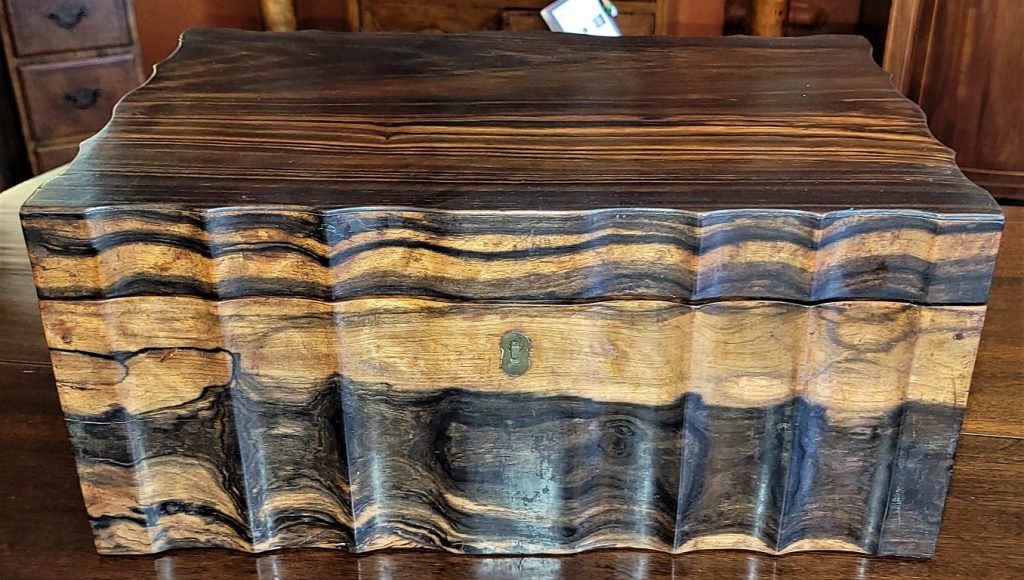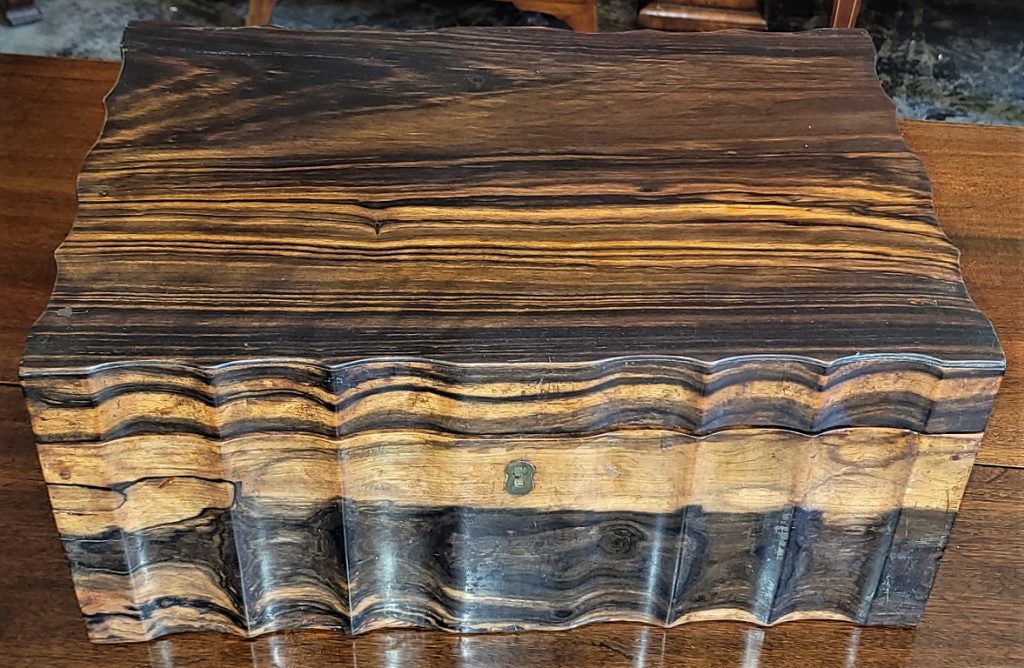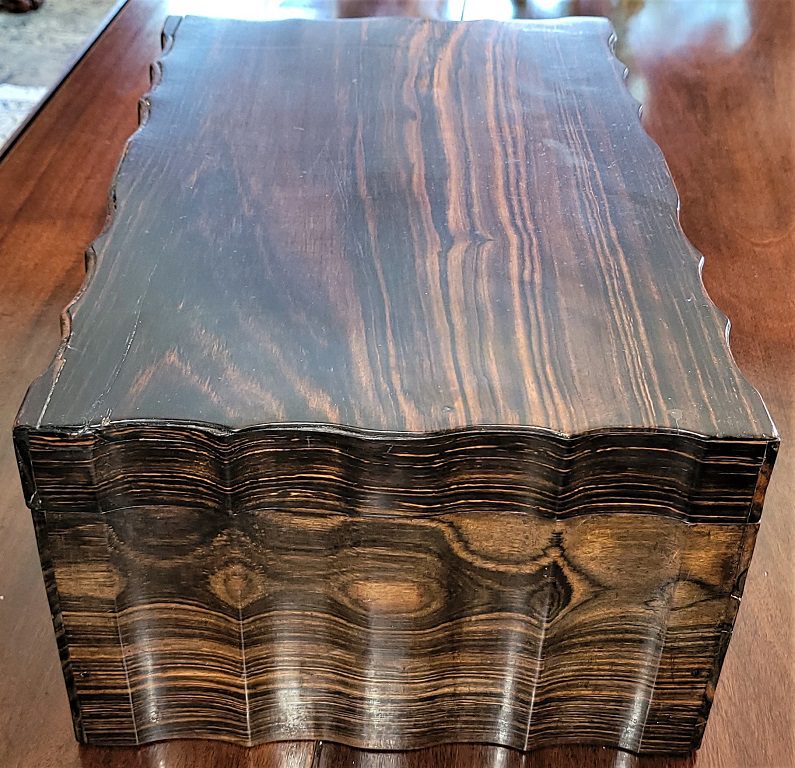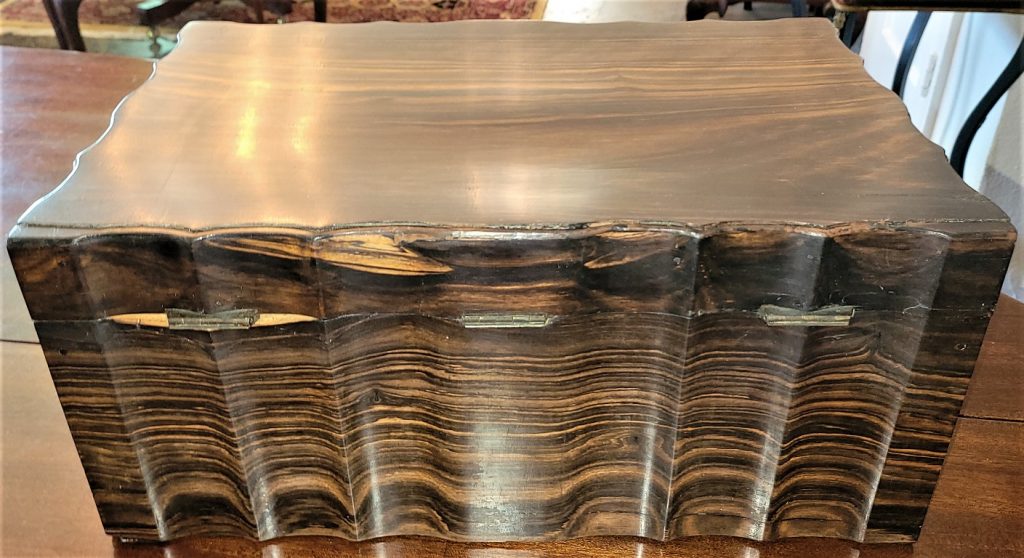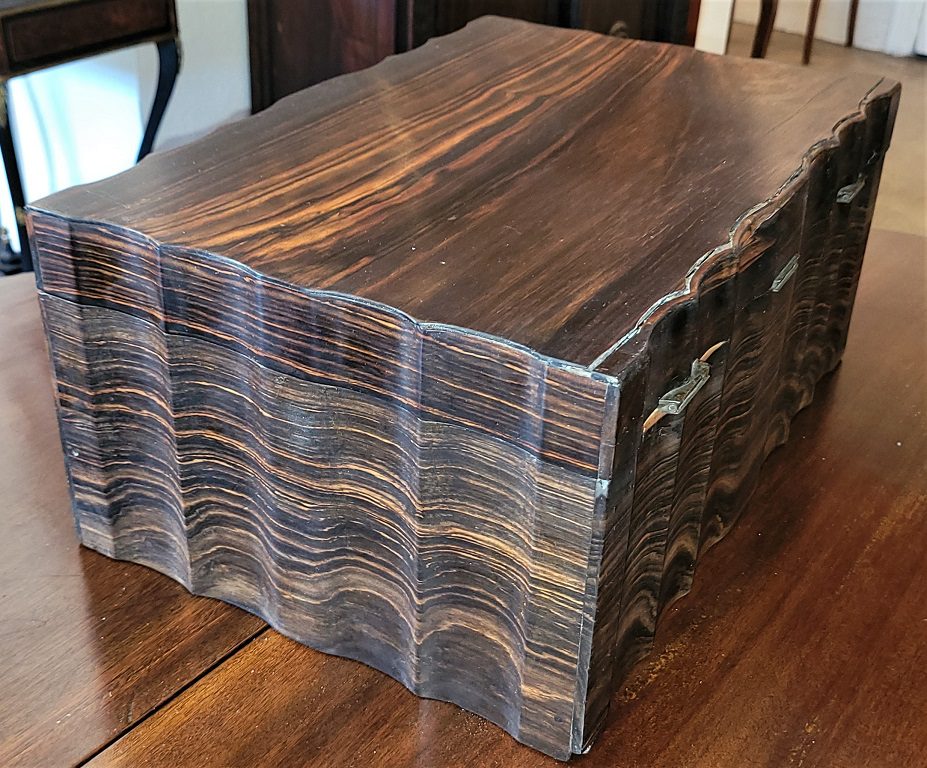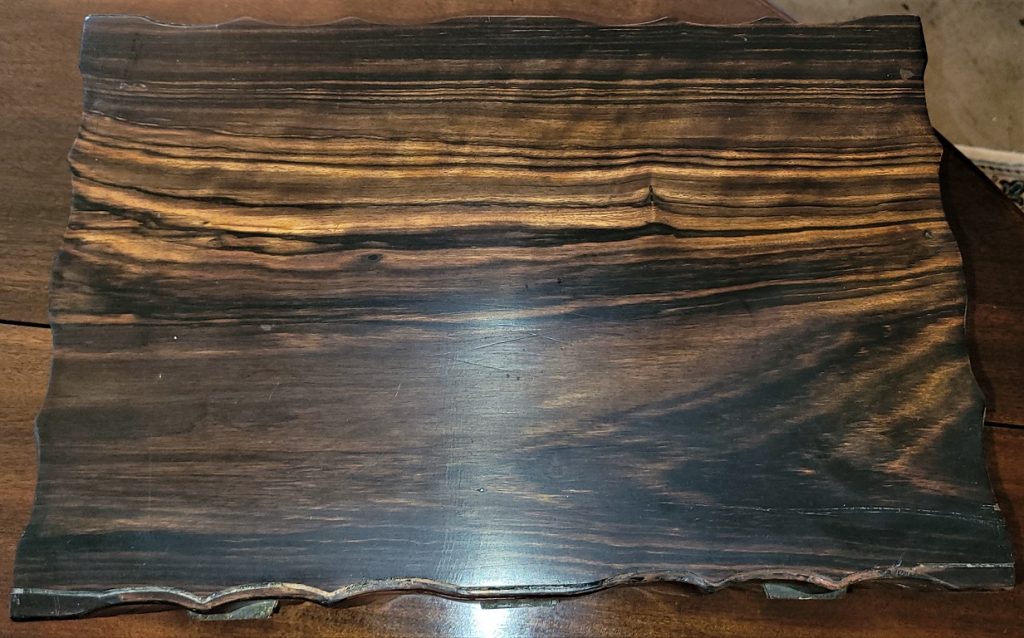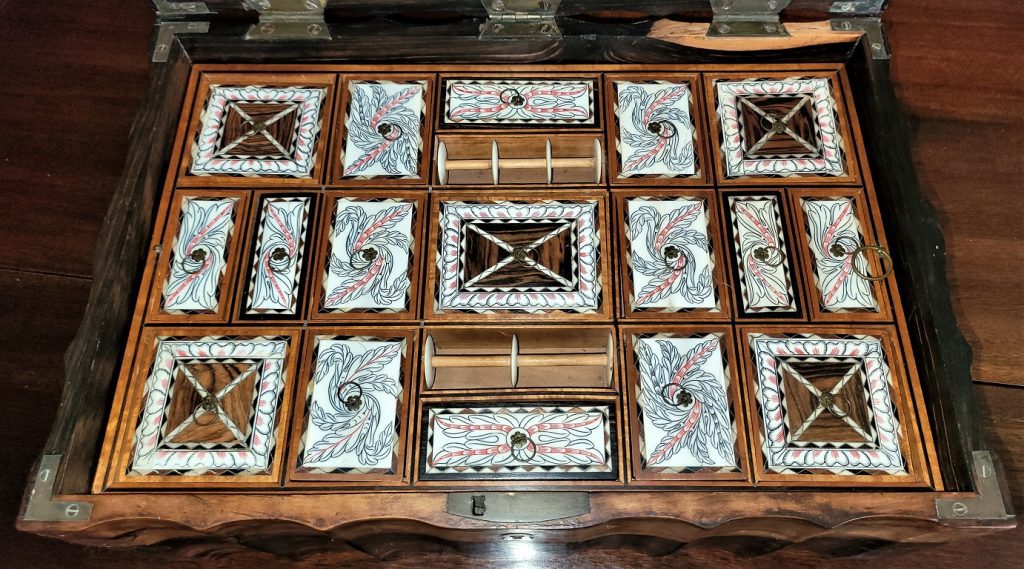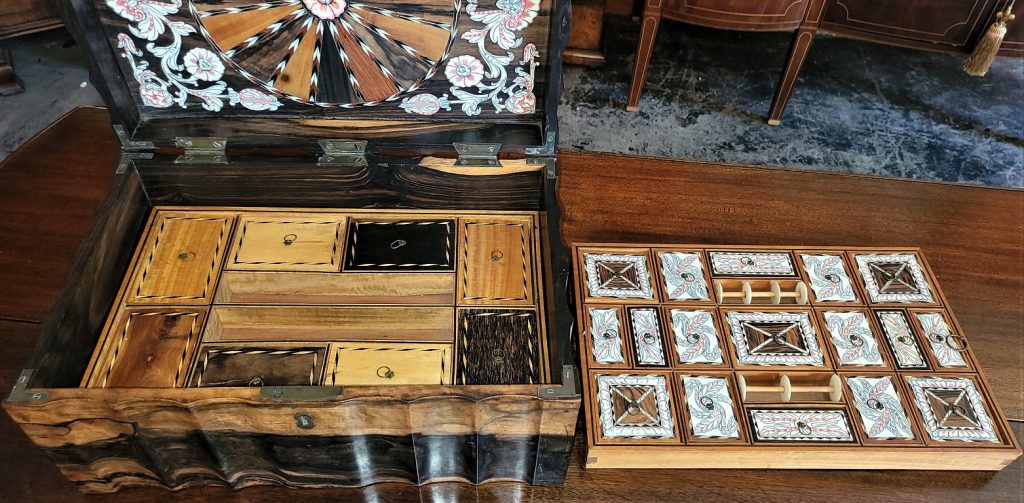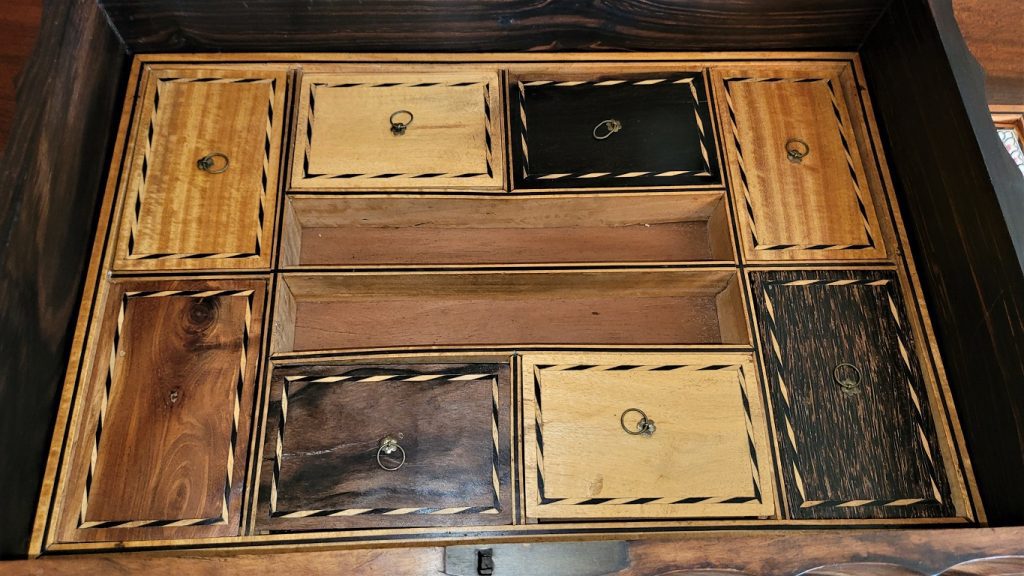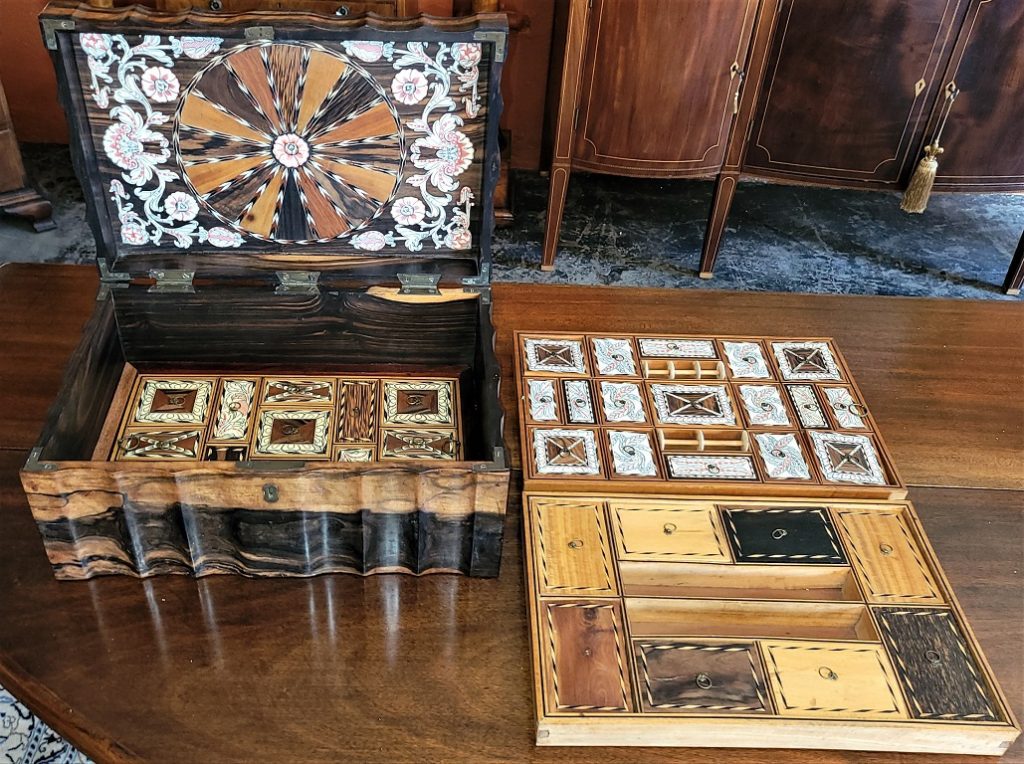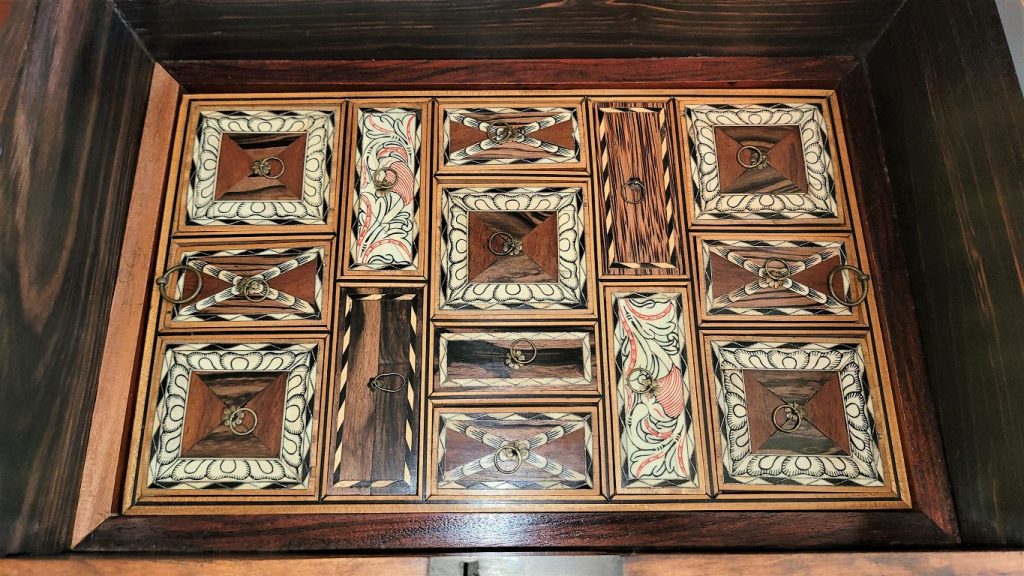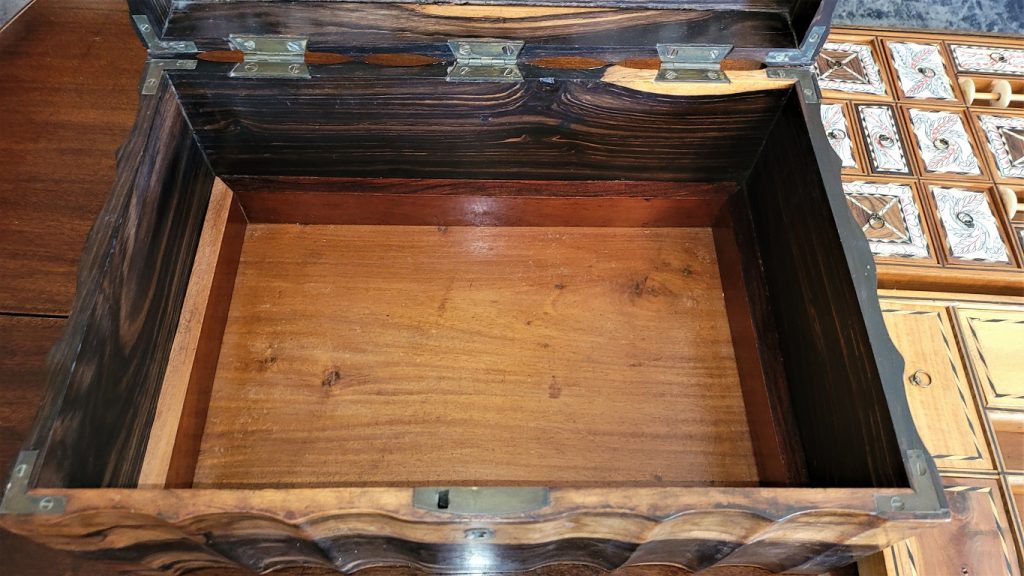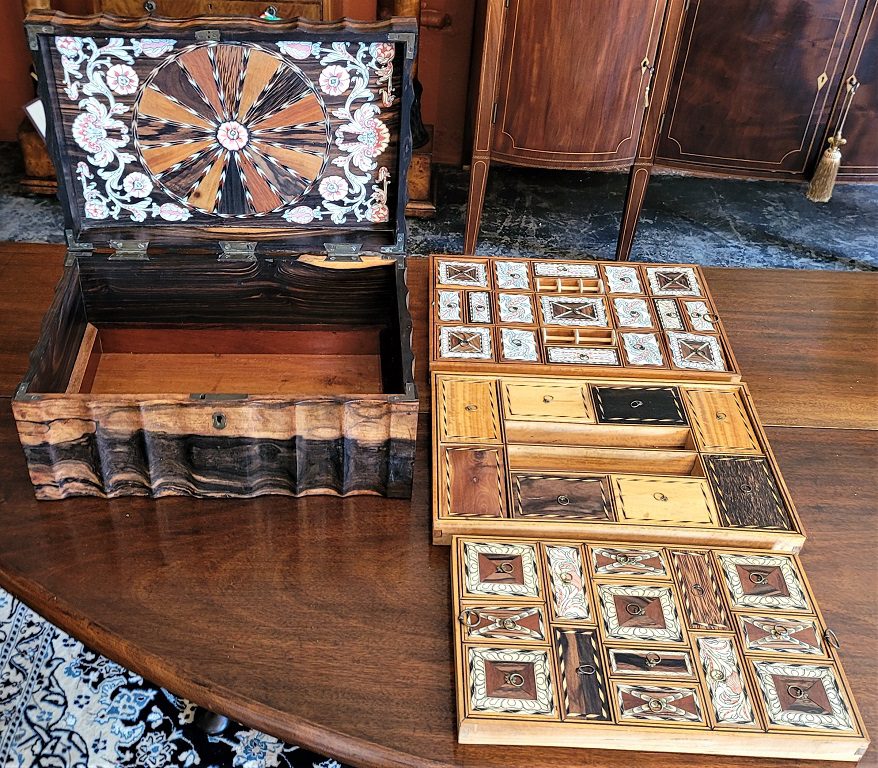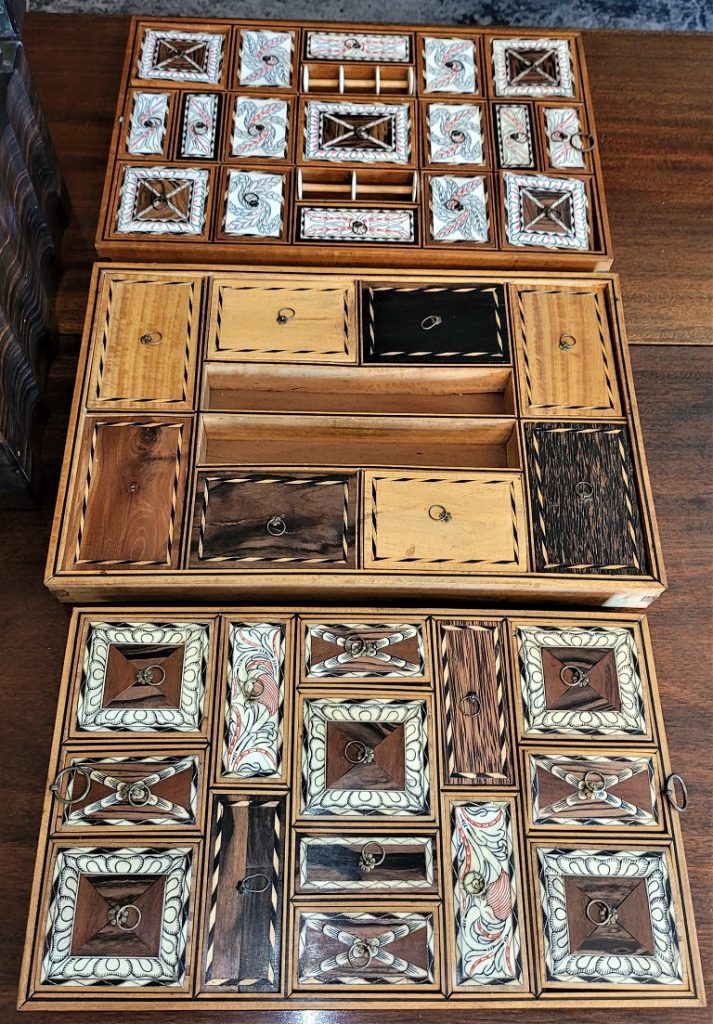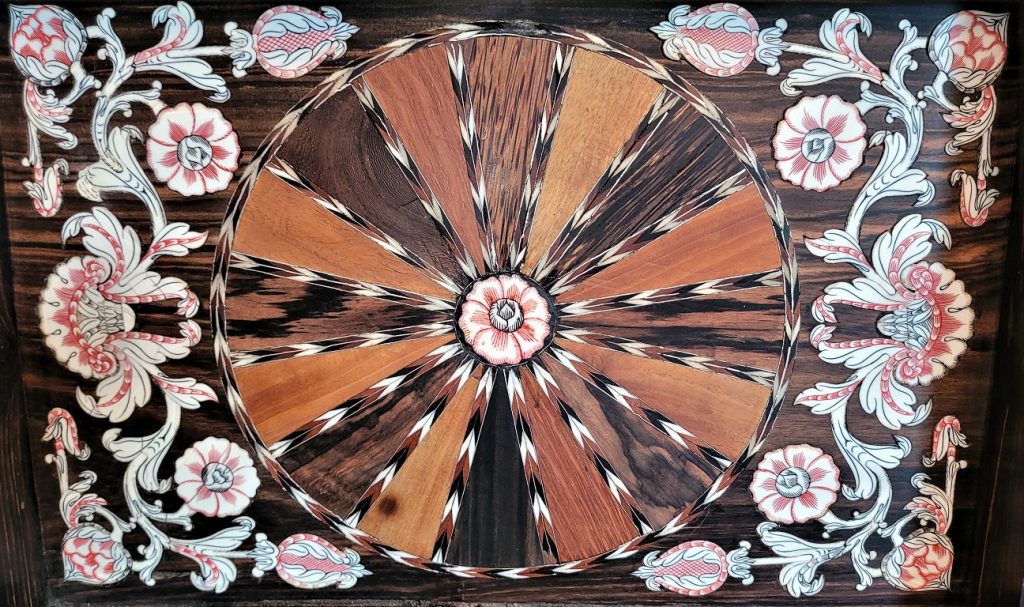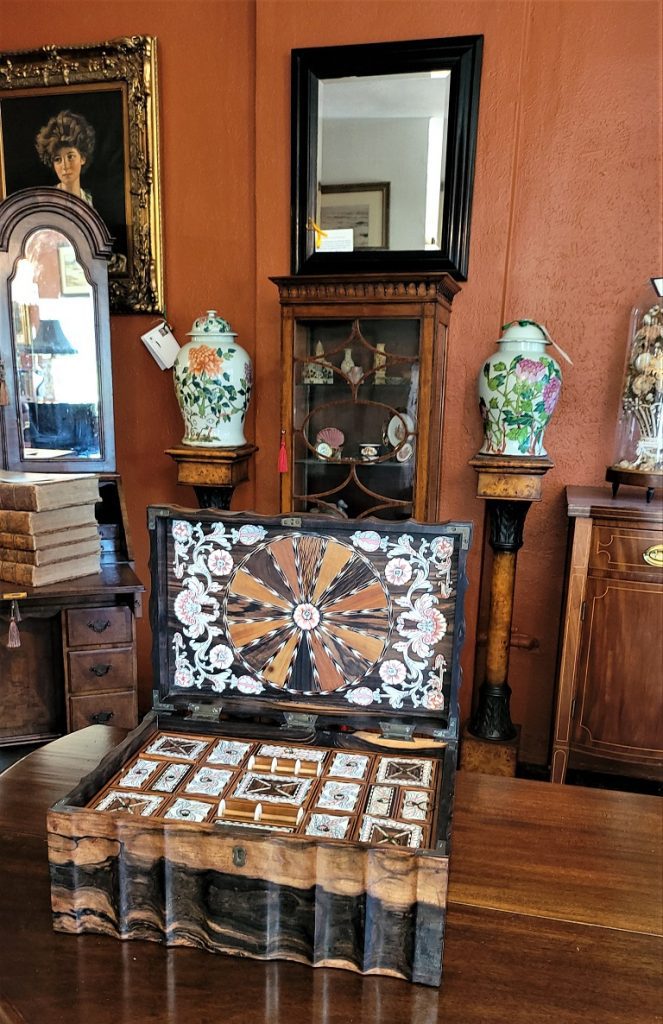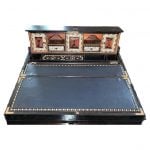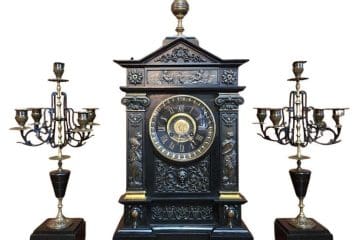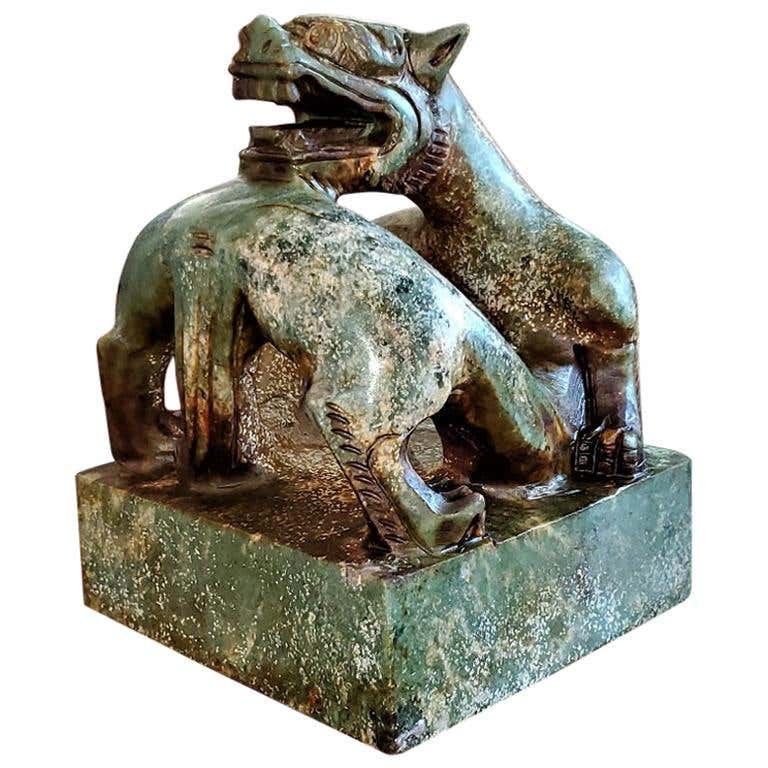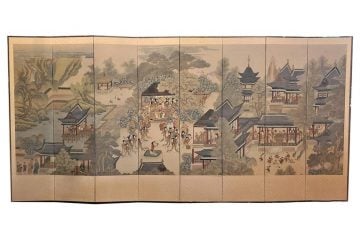19C Anglo Ceylonese Sewing Box of Museum Quality
PRESENTING AN ABSOLUTELY STUNNING 19C Anglo Ceylonese Sewing Box of Museum Quality.
Made in Ceylon (now Sri Lanka) circa 1860, this is one of the FINEST sewing boxes of it’s kind that we have EVER SEEN !
The box is made from coromandel wood (an exotic hardwood found in Ceylon) and has a serpentine edging all over the front, back and sides.
Very often the lids/tops of these boxes suffer cracks due to shrinkage but this one is near perfect with no crack in the lid/top. There is some evidence of natural shrinkage but that is around the edges of the lid/top.
It is when you open this box that it reveals it’s true beauty, quality and treasure !
The inside of the lid/top is heavily and beautifully decorated with inlaid bone in scrolling floral patterns which have then been hand painted with red and black ‘lac’ ink. The central medallion is a circle of inlaid specimen exotic hardwoods radiating towards a central bone and hand painted flower. The circle is edged in bone, wood and silver chevrons.
What makes this box EXCEPTIONALLY RARE is that it contains 3 lift out base sections. Normally, there would be a maximum of 2.
The first tray/section is clearly for the purposes ancillary to sewing with a pair of sections with bone spools for thread etc. There are 17 other lidded compartments with each one highly decorated using hand painted bone and specimen woods to replicate tortoiseshell.
The first tray lifts out to reveal a second removeable tray which is made up of a pair of open sections and 8 specimen wood lidded sections each with chevron banding.
The third tray is a smaller tray underneath with 14 lidded compartments each with hand painted bone and specimen wood inlaid lids again, replicating the look of tortoiseshell. Again they are banded with a chevron border.
THIS IS A MUSEUM QUALITY PIECE !
It is in fantastic condition for it’s age with the minor shrinkage to the edges of the lid/top, some finger pulls missing and some very minor cracks to the tray lids and bases but nothing that in any way detracts from the piece. No key.
ANGLO-INDIAN AND CEYLONESE BOXES: Anglo Indian boxes were made in India for the English residents from the early part of the 18th century. They were brought back or sent back to England usually by the people who had commissioned them. From the beginning of the nineteenth century they were imported more commercially, although not in any significant numbers until the middle decades. They were very highly valued, especially the early ones, to the extent that the designs were copied on late 19th and early 20th century tins.
Anglo-indian Boxes normally consist of 3 main types:-
(1) Most of the best and highest quality Anglo-Indian boxes in the 18th and 19th Centuries were made in Vizagapatam, India, renowned for its exquisite craftsmanship in using ivory and tortoiseshell and lac decoration. These are referred to as ‘Vizagapatam Boxes’.
(2) The Bombay area became famous in the 19th Century for its carving of sandalwood boxes and use of Sadeli Mosaic. These are often referred to ‘Sadeli Boxes’.
(3) Many boxes of exquisite quality and craftsmanship were made in Ceylon (modern day Sri Lanka) in the 19th Century. Ceylon was part of the British Indian Colony and was not a seperate Country at that time, hence, the boxes that were made in Ceylon are often categorized as Anglo-Indian. Many of the Anglo-Ceylonese pieces were made in the Goa Region using Porcupine Quill, Coromandel or Salamander wood, ivory, ebony and lac decoration. The Ceylonese lac work was often more colorful than the Vizagapatam classic use of black lac ink.(Lac ink was an indelible ink made from crushing Lac Beetles). Ceylonese boxes and furniture also became famous, due to the use of various exotic specimen woods in the decoration of their boxes and furniture. These specimen wood pieces are HIGHLY PRIZED AND HIGHLY DESIRABLE !!
This box falls into Category 3 above ………………….. SPECTACULAR AND RARE !!
COROMANDEL WOOD: Calamander wood or Coromandel wood is a valuable wood from India, Sri Lanka (Ceylon) and South East Asia. It is of a hazel-brown color, with black stripes (or the other way about), very heavy and hard. It is also known as Macassar Ebony or variegated ebony and is closely related to genuine ebony, but is obtained from different species in the same genus; one of these is Diospyros quaesita Thwaites, from Sri Lanka. The name Calamander comes from the local sinhalese name, ‘kalu-medhiriya’, which means dark chamber; referring to the characteristic ebony black wood. It is used in furniture, Luthiery and for sculpture.
Coromandel wood has been logged to extinction over the last 2 to 3 hundred years and is no longer available for new work in any quantity. Furniture in coromandel is so expensive and so well looked after that even recycling it is an unlikely source. A substitute, Macassar Ebony, has similar characteristics and to the untrained eye is nearly the same but it lacks the depth of colour seen in genuine Coromandel.
Link: https://en.wikipedia.org/wiki/Calamander_wood
19C Anglo Ceylonese Sewing Box of Museum Quality .
Provenance: Part of our Extensive Anglo-Indian Collection.
Dimensions: Closed the Box is 16.75″ Wide, 11.25″ Deep and 7.5″ High
Fully Open the box is 16.5″ High, 16.75″ Wide and 11.4″ Deep
Condition: Excellent original condition. No Key.
